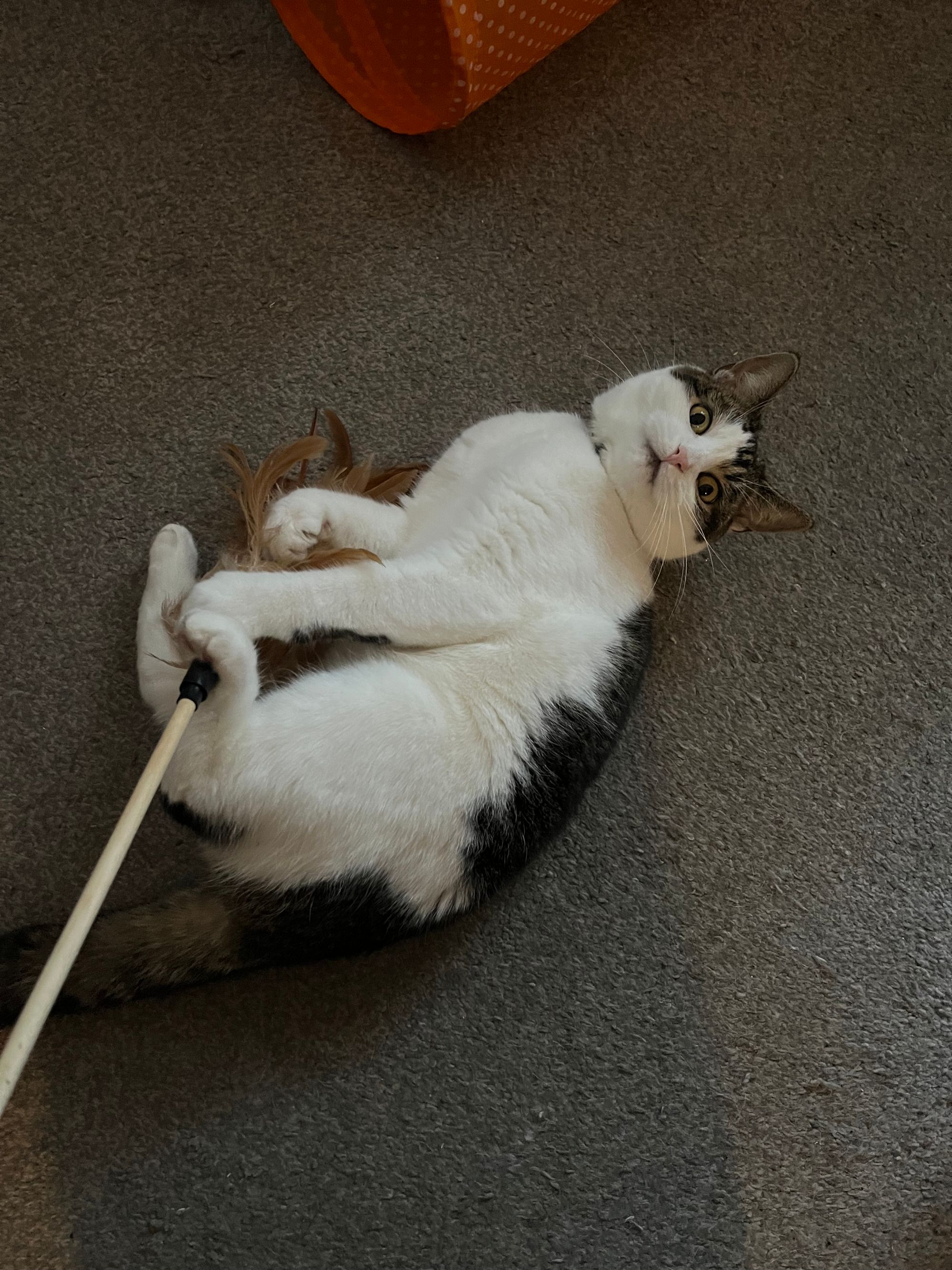52 Weeks of Writing: Week 38: Shadow work for developing characters and plot

For the last week, I've been digging into the idea of shadow characters and shadow work. If you haven't encountered this aspect of storytelling before, the basic concept is that characters (or even groups of characters) around the main character, represent dark features of the protagonist's psychology.
This can work on an individual level, but on a much bigger scale as well. The classic example is Gollum/Smeagol, who represents Frodo's shadow. Sauron is the shadow of the goodness in Middle-Earth. In The Lord of the Rings, especially in the second and third books, Gollum's role for the reader is to illustrate the potential negative outcome for Frodo if he gives in to the power of the Ring.
Not every book uses shadow characters, but it's a very good way to provide the reader with a demonstration of why this matters, why this whole story is happening.
Most recently, I read The Seven Moons of Maali Almeida, which also uses shadow characters. The main character, Maali Almeida, is effectively being sent on a quest to attempt to reveal and end the horrors of the civil war and the inequities of life in Sri Lanka at the time.
Throughout the novel, he is drawn to follow Sena, a character who believes that it is okay to kill others in order to achieve his aims. Sena, like Gollum leads Frodo on, offers advice to Maali Almeida, and acts as a guide. It is only toward the end that Maali finally realises he's being led astray to the dark consequences of what he's attempting to do.
These examples provide some idea about what the shadow character does and the role they play in the story. Shadow characters don't just reveal the darker side of the main character, but they attempt to lead them astray, demonstrating to the reader that the main character has a choice, and that in order to make the right choice, they have to avoid what's happened to the shadow character.
Gollum is probably the better known example, but both he and Sena must lead their respective main characters through the world toward the final goal. Gollum shows up as Frodo steps into the wilder, darker lands to the east of the mountains and away from the influence of the Fellowship. He is leading Frodo physically astray (not initially, but then directly into the maw of Shelob), as well as revealing the dangers of having and using and coveting the Ring.
Sena, on the other hand, has to explain the rules of the world, so although Maali is familiar with the living, physical space, he does not know how the metaphysical landscape works. As Sena embraces his desire to change the world by whatever means necessary, he becomes more and more powerful. There's a wonderful transition in the book as Sena initially shows up wearing black trash bags and by the end wears robes and has transformed into a demonic entity.
This got me thinking about how a shadow character would need to operate in my story. This has wound me back from 80k words done to "Oh my god, I need to introduce this person at X point and shift the direction of the story much earlier." So that sucks.
But I'd much rather write the story right rather than carry on as I am and then just have to do-over at 140k.
Now, though, we have to come back to the top. I brought you all to this point to discuss what the work on developing my own Maali's* shadow led to. I didn't expect this to happen. I've been in and out of therapy for a long time, and this week was tough for reasons, mostly to do with a current news story. But this work threw me a bit, because in order to really dig into Maali's character, I need to pull out some darkness of my own.
When they say writing is easy, you just open up a vein and bleed onto the page, they are not kidding.
I started working through some core scenes from Maali's past, using Story Genius as a model. In Story Genius, the basic idea is to lead a character through the resolution of a misbelief they have about the world. In order to do that, we have to know what the misbelief is and where it came from.
This made me see just how much I'd accidentally modelled a lot of Maali's early experiences in such a way that they mirrored my own. A great many emotions were stirred up. Or not so much stirred as shaken and then flung around the room. I don't think I can dig into the details here, but it's enough to say that it's hard, really hard. When it comes to fiction, we do write what we know, but it's what we know on an emotional and psychological level, not an intellectual one.
There are stages to this. Story Genius doesn't really deal with the concept of a shadow character, which is a shame because it would definitely build on Lisa Cron's theories about why we need stories and why these stories need a deep emotional underpinning. The shadow character(s) helps to build out that third rail, giving the audience not only a reason to care but a demonstration of the consequences if the right choices aren't made.
An effective shadow character, therefore, is exposed to the same kind of options and has the same kind of end goals as the main character. Or at least, that's how it seems at first. Gollum doesn't want Sauron to get the Ring (because he wants it for himself). Sena wants an overall end to the civil war and to defeat the forces causing it, but is prepared to kill innocents to do it, while Maali Almeida wants to end the killing of innocents.
The Story Grid's blog post on the subject provides some solid examples, but it's not until you examine those examples in detail that you can really start to nail home the shadow character's role. A shadow is something like an antagonist, but the way they interact with main characters is not obviously negative, at least at first. Although we're always suspicious of Gollum, if you read Seven Moons, it's easy to be more ambivalent about Sena, especially because he appears in a world whose rules aren't known to us and he acts something like a guide to Maali Almeida early on.
This week has been a combined process of trying to avoid certain mainstream news stories because they were too much, wrestling with the early stages of the plot, and then realising that it was setting off a lot more deep emotional work for me on a personal level. I've very much been on the struggle bus this week in terms of writing and planning.
If I talk about what I'd actually like to do here with a shadow character, is that spoilerrific? I'm not sure. I'll use Sena as an example, because I can write about that as a model for a shadow character without giving away too much of either Shehan Karunatilaka's story or my own.
Shadow characters acting as a guide, or a false mentor, for the main character, show up when the main character first arrives in the alternate world of the story. This somewhat follows Campbell's idea of the monomyth and character archetypes, of course, and if that's not your vibe, then this might not work.
Maali Almeida, upon arriving in the world of the afterlife, is presented with two paths. He can follow the path suggested by the "afterlife official", Dr Rehan, and its bureaucracy-heavy route to The Light, or he can follow Sena, dressed in trash bags, who promises to answer what Maali Almeida thinks are his questions about what happened to him.
Maali Almeida's choices are directed by his sense of distrust for systems like the one represented by Dr Rehan, although she appears intermittently throughout the book as a kind of saviour, trying to drag him back to the better path. Sena convinces Maali to follow him, because he offers more information, more directly and, of course, Maali knew Sena briefly when he was alive.
We have, therefore, something of a model for a character. Friendly, appealing in a way that the preferred route is not, keen to help but offering hints that perhaps they should not be trusted. Initially, both the reader and the main character can misread warning signs. Maali Almeida misreads the warning signs of the Helpers trying to get rid of Sena before he can win Maali around as heavies employed by a stern bureaucratic system to get rid of a voice that needs to be heard.
Sena provides a mixture of truthful, helpful information and lies, both to Maali Almeida and the reader. Initially, much of what he tells us is truth. All around him, third party interactions provide subtle warnings that Maali ignores because Sena really is the only one offering to solve his immediate problems.
Now, I'm not writing a story where the character starts off dead and must navigate a complex afterlife packed with assorted ghouls, ghosts, and demons. But a lot of the fundamental ideas about Sena hold true for my own Maali, and the shadow character in my own story.
Working through an analysis of Sena's role in Seven Moons has helped me figure out how a shadow character could work for me. It's dragged the story back on track, because I was missing a solid, clear antagonist and a first and second rail, let alone a third one. If you've read this far and you're writing something but you've gotten stuck, it can be really helpful to look at other stories that worked for you as a reader to identify how and why they worked so well.
To help me do some psychological work on my own Maali, I've ordered a copy of Darian Smith's Psychology Workbook for Writers. I'll let you know how that goes next week.
Which leads me on to a lighter note. I'm going on holiday! This will be my first real and long holiday since going to Rome in 2019 and my first break away from home since going to Warner Studios in 2021 for my birthday. I'm anxious about being away from home because I'm autistic and these things are always hard. I'm also desperately going to miss our cat. However, I want to see if being away and not working helps spark some creativity.
It's a canal boat holiday and we took loads of those when I was growing up. I shall be reporting in from there next Friday and for once I was smart enough to write this a day early because we're travelling on the Friday when I've scheduled this to go up.
In the meantime, I think I know who the shadow character will be for this story. I need to do some redirection and misdirection first and carry on editing the early scenes I've written to make sure that they are emotionally on point. My plan right now is that I'm going to spend October working on this planning and use Nanowrimo as an opportunity to edit and start re-writing what I've already done.
But then we all know what I'm like with plans, so none of us are holding our breath.

* That'd be my Maali, the main character of my novel, and not Maali as in Malinda Almeida from Seven Moons.
